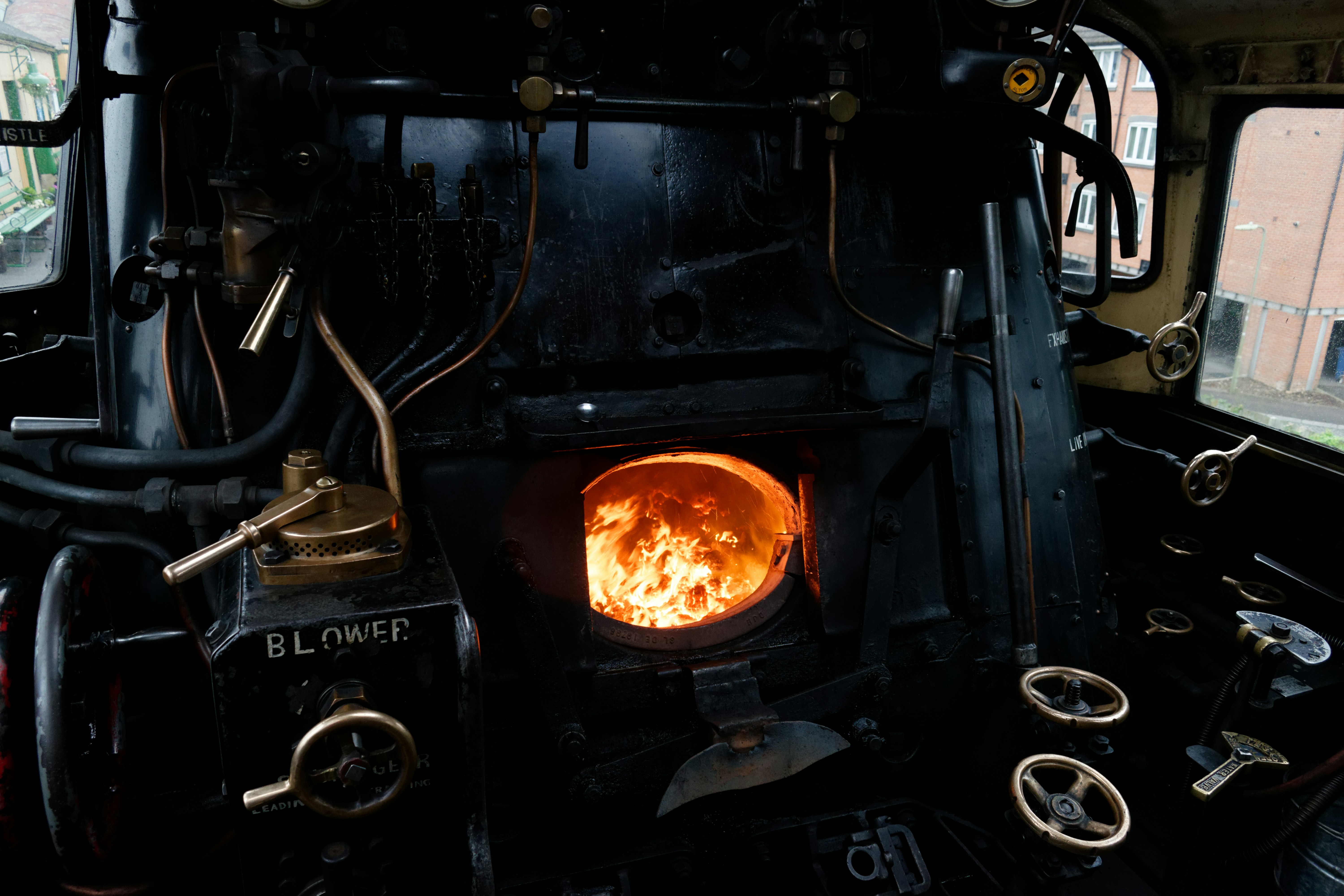

- © 2018 Steve Allen Contact Me 0


PARAFLAME BURNER
THE PERFECT MINIATURE BLOWLAMP
for Locomotive Marine or Stationary Boiler Firing
Supplied complete with container or as separate burners for individual fitting

SPECIFICATION
Length of Burner only (excluding fuel tube) …………… 3 1/2 in.
Width of Burner only ………………………..……. 1 in. x 7/8 in. high
Length of Venturi flame tube ………………..…….…..……. 1 1/2 in.
Size of Container ……………………………..…….…… 2 1/2 x 1 1/2 in.
Overall length of complete Burner and Container ….. 7 1/2 in.
For large boilers two burners may be mounted in tandem or parallel using one container.
Price of Blowlamp Complete ……… £2 6s. 0d. …..…P/Tax. 9/3
Price of Seperate Burner ………..…. £1 17s. 6d. ……P/Tax. 7/6
DIRECTIONS FOR USE
Remove filler cap and put one-twelfth pint of paraffin in container.
Replace filler cap (ensuring washer is intact) and screw firmly.
Heat burner coils. Out of doors use a small tin dish filled with asbestos string or cotton waste and soaked with methylated spirit. Shield from wind.
Take care not to place the jet itself in the flame.
Allow about 3 to 4 minutes for burner to become well heated then attach cycle pump to filler cap and give about a } to $ stroke. Only a very low pressure is required—certainly not
more than 5-lb.—over-pumping will cause the burner to fail. If the burner does not ignite immediately, either—
(1) It has not been preheated sufficiently. Let down the air pressure and reheat.
(2) The jet may be fouled, in which case the nipple cleaner should be used.
If the flame is yellow, it indicates that the burner is not vaporising properly, due to it being insufficiently heated ; left to burn, this trouble may correct itself, but don’t let this happen often, as the jet may become choked.
STUART BLOWLAMP.

Different boiler type require different heat sources. Creating steam requires a lot of energy, ( it requires the same energy to raise water to 100 °c as it takes to turn it into steam.) thus in the early years quite dangerous petrol was used. Parafin requires more effort to produce a relaible flame including pressure and vapourising heat, the stuart blowlamps have the parafin feed through a pipe either wound round the burner or mounted in the flame, this is to create vapour that is then burnt. the pressure is used to keep the vapour supplied to the burner at a suitable flow rate.This is why the instructions include heating the burner head to quite a high heat with methylated spirits. Gas poker type burners are pretty simple, literatally a pipe with holes cut for the gas to exit and catch fire. The pattern of holes allows the designer to concentrate the heat to match the layout of the boiler, hence the H shaped burner for the Mendip. Methylated spirit burners consist of a fuel container and a burner pipe that has holes cut, the fuel is however fed through the use of a heatproof material like a wick that slows down fuel flow preventing the gravity fed tank from flooding fuel out of the holes. Some boilers like the Mendip can use several different fuel types, Coal, Gas, Methylated spirits. Each fuel type has advantages and disadvantages, these are mostly related to convenience, burn time, energy density, etc. This can cause problems. Many older toys steam boilers relied on methylated spirits as a fuel this burns at 500 °c, nowadays the convenience of parafin wax pellets causes low steam pressure due to its lower burning temperature of 199 °c.
Coal 1200°c. Used for model steam locomotives, needs grate for aireflow and takes a long time to get burning usefully.
Parafin 1100°c. requires burner head to be heated to 370°c to vapourise fuel for burning.
Parafin Wax 199°c. Comes in easy to use pellets or blocks.
Butane 1970°c. Supplied in liquified gas containers that chill as the gas is burned, reducing flow thus models often include a method of warming the container.
Methylated spirits 500°c. Usually burned in a gravity fed wick supplied burner. The liquid is easilly spilled and burns readily.




16th February, 1957
A.R.W., of Ayr, writes:-
"in 1933 I installed one of your S.T. Engines in the Model, of which I enclose a small photograph. This has been driving twin screws and gives the model sufficient speed to make it look realistic. Model Clyde 'Queen Mary," 39-in. long."

Please Consider Making a Donation